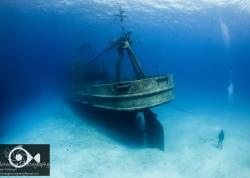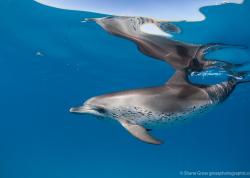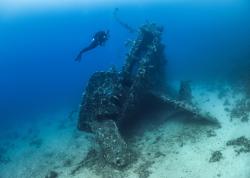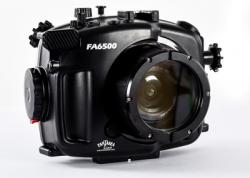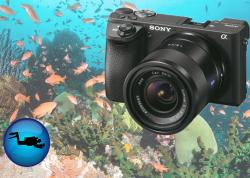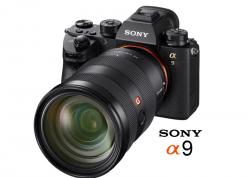When to Use GoPro Filters Underwater
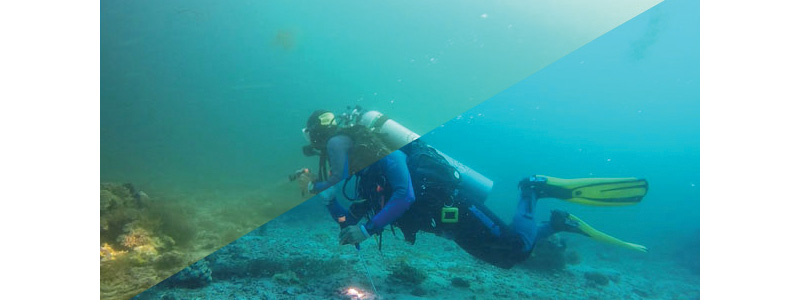
Producing high quality underwater video has never been easier. Small, easy-to-use cameras at great prices have lowered what was once a very high barrier to entry. GoPro leads this charge, which comes at no surprise if you’ve been on a dive trip in the last couple years. On every trip you’ll spot several divers with GoPros, whether mounted on poles, trays, handles, larger camera housings or even diver heads.
It’s a simple thing to take the GoPro out of the box and press the record button a few times, instantly becoming a bonified underwater videographer. But how do you take it to the next level? How do you capture video you will actually look at on your computer? What gear should you add to your GoPro Hero kit to increase the quality of your video.
In this latest installment of UWPG’s GoPro tutorial series we show you some examples of using underwater filters, video lights and more.
Be sure to read our GoPro HERO5 Review.
Using Underwater GoPro Filters
Underwater filters are designed to bring color and contrast back into your underwater video. These colors are lost as we descend in the ocean, starting with red, which is why these filters are red or magenta. By bringing the reds back, the GoPro will also be able to select a more accurate white balance when recording clips. You can see the differences that filters make in the sample screenshots below.
I always recommend using a filter with your GoPro, unless you are using video lights for a close focus wide-angle shot (see section below on video lights).
A Red filter is the most commonly used. This filter is optimized for use in blue water, while a magenta filter is optimized for use in green water. During my test dive in Anilao, Philippines, the water was definitely a bit green, but nothing like in the photos I see from BC and the Pacific Northwest, or off the beach in Malibu when we have an algae bloom. You’ll notice in the video below that the red filter nicely brings the colors back into the video, while the magenta filter doesn’t make much difference. It's important to point out that you should definitely keep that magenta filter on hand, as you never know when you'll come across that green water.
I was happy to be using my GoPro Hero4 Silver for this review since it has an LCD screen built into the back, allowing me to view the changes made by the filters. Of course, the screen helps with composition too. If you have another GoPro model, you can purchase an LCD Touch BacPac to make sure you can see every shot you make.
GoPro Filter Test Photos

No Filter. GoPro Hero4 Silver video screenshot.

Red Filter. GoPro Hero4 Silver video screenshot.

Magenta Filter. GoPro Hero4 Silver video screenshot.

No Filter. GoPro Hero4 Silver video screenshot.

Red Filter. GoPro Hero4 Silver video screenshot.

Magenta Filter. GoPro Hero4 Silver video screenshot.

Red Filter. GoPro Hero4 Silver video screenshot.

Magenta Filter. GoPro Hero4 Silver video screenshot.
Using Video Lights with GoPro
GoPro underwater filters are perfect for shooting subjects that are more than a couple feet away from the camera, however if your subject is close to the camera, you will get much better video by using video lights.
Video lights are similar to the underwater strobes that still photographers use in that the artificial light brings all the color back into the reef. It’s the same reason that most smart divers use a flashlight when looking at details of the reef or critters – even with the sun high overhead.
There are two things to keep in mind when using video lights with your GoPro underwater. The first is to make sure you are close enough to the reef (or swimming subject) so that it is well lit by the light(s). This is generally less than 4 feet. The second thing to be aware of is that the GoPro has a minimum focus distance of 12 inches, meaning that you cannot place the camera less than 12 inches from the subject or it will not be in focus (sharp focus is essential for a good video clip). This is tricky because you won't be able to tell if focus is sharp while underwater - only once you have loaded the video onto your computer. That said, Polar Pro makes a macro wet lens that magnifies the scene and decreases that minimum focus distance.
My GoPro light setup, built from some spare parts and powered by two I-Torch Venom38 video lights.

Video Lights, no filter. GoPro Hero4 Silver video screenshot.
Custom White Balance
I’ve added a section on custom white balance for advanced GoPro users who are shooting in Protune mode with the intention to post-process video clips and create a movie of their dive or trip. In short, custom white balance will allow the GoPro user to select a custom white balance to best fit the scene they are shooting. Choices include Auto, 3000K, 5500K, 6500K and Native.
Finding the right white balance will depend on the filter (or video lights), depth and water conditions, so make sure you're using an LCD display if you plan to set your own WB.
GoPro Filters & Lights Demo Video
UWPG's GoPro Tutorial Series
Other Recommended Reading
RECOMMENDED ARTICLES
SUPPORT THE UNDERWATER PHOTOGRAPHY GUIDE:
The Best Service & Prices on u/w Photo Gear
 Visit Bluewater Photo & Video for all your underwater photography and video gear. Click, or call the team at (310) 633-5052 for expert advice!
Visit Bluewater Photo & Video for all your underwater photography and video gear. Click, or call the team at (310) 633-5052 for expert advice!
The Best Pricing, Service & Expert Advice to Book your Dive Trips
 Bluewater Travel is your full-service scuba travel agency. Let our expert advisers plan and book your next dive vacation. Run by divers, for divers.
Bluewater Travel is your full-service scuba travel agency. Let our expert advisers plan and book your next dive vacation. Run by divers, for divers.







